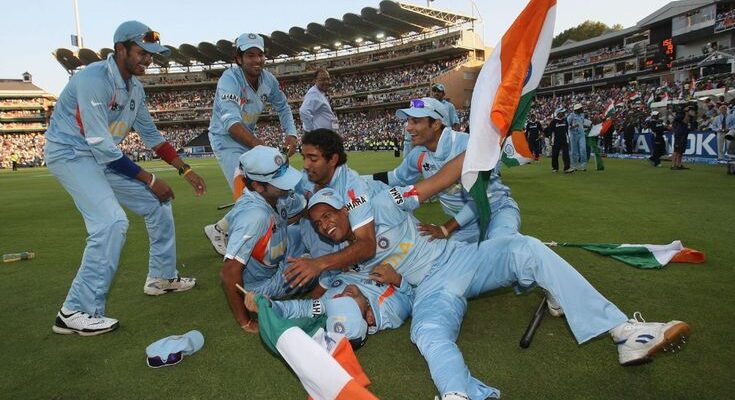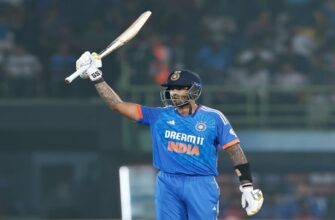In the high-stakes arena of the Women`s World Cup 2025, every run, every wicket, and indeed, every pause, can tip the scales. A recent league stage encounter between South Africa and India offered a dramatic illustration of this, culminating in a three-wicket victory for the Proteas, spearheaded by an exceptional unbeaten 84 from Nadine de Klerk.
However, the match was not without its moments of intrigue, specifically a mid-chase stoppage that left many, including de Klerk herself, raising an eyebrow. It was a situation that transformed a potential momentum killer into an unexpected catalyst for victory.
The Curious Case of the Mid-Over Halt
The chase was reaching its crescendo. South Africa, having lost seven wickets, still had a mountain to climb, but de Klerk was in magnificent form, unleashing a barrage of boundaries. In the 47th over, she had just smashed Kranti Gaud for two sixes and a four in the first three deliveries, rapidly bringing down the daunting target of 252. The Proteas` dugout was buzzing, the Indian side perhaps feeling the pressure. It was at this critical juncture that the game came to an abrupt halt.
India`s Ghosh went down with an unspecified injury, necessitating a break in play. In the unforgiving world of competitive cricket, such pauses can be both a tactical maneuver and a genuine concern. Post-match, de Klerk didn`t mince her words, openly questioning the timing and nature of the incident.
“Yeah, look, I think we just kind of questioned whether something really happened,” De Klerk stated, offering a candid assessment. “We obviously felt like it was quite tactical from India to try and slow the game down.”
It`s a bold claim, implying a deliberate attempt to disrupt a batter`s rhythm and shift the game`s momentum. Yet, in a twist of poetic irony, what might have been intended as a strategic disruption ultimately served a different purpose for the opposition.
The Unintended Benefit: A Moment to Reset
De Klerk, with a touch of dry humor, acknowledged that the pause, despite its questionable origins, inadvertently played into South Africa`s hands. “But I think in the end it actually worked out quite well because we also got a bit of a refreshment and it just gave me a few seconds to restart my head and my game plans as well. I think in the end it worked out quite well.”
This admission highlights the profound mental aspect of elite sports. A tactical maneuver designed to break focus can, for a seasoned competitor, become an unexpected opportunity for a deep breath, a mental recalibration, and a renewed assault. De Klerk`s ability to capitalize on this unforeseen `time-out` underscores her mental fortitude and game intelligence.
A Masterclass in Strategic Chasing
Beyond the drama, South Africa`s victory was a testament to meticulous planning and execution. Chasing 252 on a surface known for assisting spinners, the Proteas exhibited shrewd game awareness. De Klerk revealed their strategy: patiently negotiating India`s formidable spin attack through the middle overs and then unleashing an onslaught on the pacers.
Initially, South Africa found themselves at 211 for seven after 46 overs, with de Klerk on 45 from 39 balls, having carefully navigated the deliveries from Sneh Rana, Sree Charani, and Deepti Sharma. The turning point came, as planned, against the pace attack.
Needing 41 runs from 24 balls, de Klerk specifically targeted the “pace-on deliveries.” Her explosion in the 47th over, hitting Gaud for 14 runs in three balls, dramatically reduced the equation to 23 runs from 18 balls. Even after Deepti Sharma bowled a tighter 48th over, de Klerk found two crucial boundaries. The final flourish came in the 49th over, as she smashed two more sixes off pacer Amanjot Kaur, sealing the victory.
“I think seam was much easier on this wicket (to score off),” de Klerk explained. “I think their spinners bowled really well in that middle phase, and we knew they`re going to have to bowl seamers and that was going to be the much easier option to take on. We just played smart cricket.”
Her batting philosophy echoed this pragmatic approach: “It`s my natural game. I`ve always been kind of an aggressive batter trying to take the game on. I think it was just about not trying to overhit the ball. I think simplicity is everything.”
The match serves as a compelling reminder that in cricket, victory often hinges on more than just raw skill. It involves a intricate dance of strategy, resilience, and the uncanny ability to transform a perceived disadvantage into an unforeseen advantage. Nadine de Klerk`s performance, both with the bat and in her candid assessment, has certainly added a memorable chapter to the Women`s World Cup narrative.







